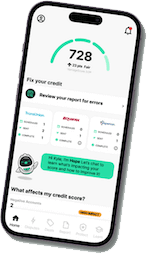A 755 credit score is considered very good and opens the door to favorable loan terms, lower interest rates, and premium financial products. This article explores the benefits of having a 755 score, factors that influence it, and strategies to maintain or even elevate your score into the excellent range. Learn how to make the most of your strong credit profile and keep improving it for even better financial opportunities.
A 755 credit score reflects a strong financial track record and responsible credit management. With a score like this, you’re well-positioned to take advantage of favorable loan terms, lower interest rates, and access to premium financial products. However, there’s always room for improvement.
This article will explain the implications of having a 755 score, what factors influence it, and how you can maintain or even elevate it to the excellent credit score range.

What Does a 755 Score Mean?
An average credit score of 755 falls within the “very good” range, according to the most widely used credit scoring models. This means lenders view you as a low-risk borrower. Most credit companies, banks, and financial institutions will offer you favorable loan terms, including competitive interest rates and higher credit limits on personal loans or lines of credit.
While a 755 score offers many benefits, it’s crucial to continue maintaining good habits to avoid any negative impacts from missed payments or high credit utilization. Services like Dovly AI can help monitor and manage your credit report to ensure you stay on track.
Financial Products Available to You
With a 755 score, you’re likely eligible for most standard financial products, often with attractive terms. Here’s what you can access:
- Personal loans: You can qualify for personal loans with lower interest rates and flexible repayment options.
- Auto loans: With a 755 score, not only are you eligible for lower interest rates, but many dealerships offer special promotions for borrowers with strong credit, making it easier to finance a car at a low cost.
- Credit cards: In addition to higher limits, many premium credit cards come with rewards, cashback options, and travel perks. You can benefit from 0% introductory APR periods, which make managing large purchases more affordable.
- Lines of credit: You can access flexible lines of credit that allow for easier financial planning and liquidity.
Understanding Scores
A credit score is a three-digit number that represents your creditworthiness based on your financial behavior. It’s calculated using information from your credit report provided by Equifax, Experian and TransUnion. Lenders use this score to assess the risk of lending you money, determining the terms and interest rates for loans, credit cards, or other financial products. Essentially, your credit score acts as a summary of your financial reliability in the eyes of lenders.
Score Ranges
The credit score range typically spans from 300 to 850, with each tier signifying different levels of creditworthiness:
- 300 – 579: Poor
- 580 – 669: Fair
- 670 – 739: Good
- 740 – 799: Very Good
- 800 – 850: Excellent
A 755 score places you firmly in the “very good” range, significantly above the average credit score.
Factors Affecting Your Score
Understanding the factors that drive your score is essential for maintaining or improving it. Your score is based on several key aspects of your financial behavior, each contributing differently to your overall credit health.
- Payment History (35%)
This is the single most important factor in your score. Lenders want to know that you reliably pay your bills on time. Even one late payment can have a significant negative impact, staying on your credit for up to seven years. However, consistent on-time payments can help strengthen your credit over time. Think of this as your credit report card: one missed credit card or utility bill payment is like a failing grade that stays with you for years. On the other hand, paying every bill on time can keep your report card spotless.Pro Tip: Setting up automatic payments for credit cards, loans, or bills can help ensure you never miss a due date. - Credit Utilization Ratio (30%)
This measures how much of your available credit you’re using relative to your limit. A higher utilization indicates that you’re heavily relying on credit, which can be seen as risky by lenders. Keeping your utilization below 30% is ideal, but the lower, the better. For example, if your total limit is $10,000, try to keep your balances below $3,000. Another example, if your limit is $5,000 and you’re using $4,500, your utilization is 90%—a red flag to lenders. Reducing this to $500 or less can instantly help your score improve.Pro Tip: Paying off balances in full each month or requesting your limit increase can help improve your utilization ratio. - Length of Credit History (15%)
The age of your accounts is another critical factor. Lenders prefer to see a long history because it demonstrates that you’ve been responsible with credit over time. Having older, well-managed accounts improves your score, while newer accounts can slightly lower it.Pro Tip: Even if you no longer use certain cards, keeping older accounts open (as long as they don’t have annual fees) can help maintain your score. - Credit Mix (10%)
A diverse credit mix—including credit cards, personal loans, auto loans, and lines of credit—shows that you can manage different types of debt responsibly. Having only one type of credit, such as just credit cards, might limit your score potential.Pro Tip: If you only have one type of credit account, consider adding another, such as a small personal loan or a line of credit, to diversify your profile. Just be sure to manage it responsibly. - New Credit Inquiries (10%)
Opening multiple new credit accounts or applying for several loans in a short period can temporarily lower your score. This is because each hard inquiry signals to lenders that you might be taking on more debt than you can handle. Be selective when applying for new credit, and space out your applications to minimize the negative impact. Soft Inquiries do not hurt your score.Pro Tip: Limit new credit applications unless absolutely necessary.
By managing these key factors—payment history, credit utilization, credit history length, credit mix, and new credit inquiries—you can maintain or even improve your 755 score. Using tools like Dovly AI can help you monitor and optimize each of these elements efficiently, ensuring that your score stays on the upward trend.
Strategies to Push Your Score to 800+
While a 755 score is strong, moving it into the 800+ range can unlock even better financial perks. Here’s how to do it:
- Reduce Balances
Keep your utilization below 10% for maximum impact. Paying off your balances regularly and avoiding large balances can quickly improve your score. Even if you can’t pay off the entire balance, try to reduce it to below 10% of your credit limit. For instance, if your credit card has a $10,000 limit, aim to keep your balance below $1,000. - Increase Your Limit
Request a credit limit increase to lower your utilization ratio. Just make sure not to increase spending, as this defeats the purpose. - Diversify Your Credit Mix
Lenders like to see a range of credit types (credit cards, loans). Carefully adding a new type of credit can boost your score. Even financing a furniture purchase with a short-term loan can help improve your credit mix, showing lenders you can manage multiple types of debt responsibly—just avoid taking on unnecessary debt. - Monitor Your Credit Report
Errors or inaccuracies can hold your score back. Regularly check your credit for mistakes and correct them promptly. Dovly AI can help monitor and track your credit health efficiently.
By following these strategies, you can work your way toward an excellent credit score, unlocking better loan terms and financial products.
Conclusion
A 755 credit score opens many doors, but there’s always potential to improve. By maintaining a healthy mix of credit accounts, keeping credit card balances low, and paying all your bills on time, you can elevate your score to new heights.
A 755 score is great, but why stop there? Dovly AI helps you easily manage your credit, track your progress, and even dispute errors in real-time. With personalized recommendations and proactive monitoring, you can push your score into the ‘Excellent’ range, opening even more financial doors. Take control of your financial future today and enroll in Dovly AI—completely free!
Related Blog Posts
Frequently Asked Questions

Tedis Baboumian
Tedis Baboumian is Dovly’s Co-Founder and Chief Credit Officer. With over 20 years of experience in the consumer credit industry, Tedis is an authority on the credit industry and has cultivated deep… Read More




